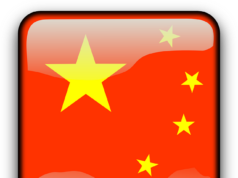
The demand for electric drives is increasing – but not enough for the lithium industry: more and more new mines are being tapped, and the industry has been prepared for the great appetite for lithium, which is needed for e-car production. But in China, the boom is falling asleep. What is left is a lot of metal in the market.
Electromobility has been one of the most important future sectors in the automotive industry for years.
Even if their contribution to combating the climate crisis is controversial, for example because of energy-intensive production, e-cars are still the market that manufacturers worldwide focus on.
The big players in the industry are focusing on e-mobility in a big way. In some countries, government incentives make the purchase of electric cars attractive, for example in Norway and now also in Germany.
Lithium is still indispensable for the batteries of e-cars. It is widely used, from car to nuclear. The recovery requires several steps, because the light metal occurs in the soil only bound. The lithium-containing minerals must be digested by chemical processes and converted into lithium chloride, from which the light metal can be obtained by electrolysis.
Speed thresholds for rapid growth
Therefore, lithium, the „white gold“, always considered scarce and expensive – and rising. The world market price had temporarily doubled from $ 6,500 per ton from 2016 to 2017 to more than $ 13,000.
For the first time, speed thresholds are emerging for this development, as the finance portal Bloomberg writes. The production volume has recently increased due to the development of six new mines in Australia since 2017. A production increase of over 20 percent is expected over the next two years.
Together with some South American countries, mainly Chile, Australia is the main source of lithium. In Chile, the light metal is extracted from salt lakes, mined in Australia in lithium mines. Mostly it will be processed elsewhere. Chile, too, wants to boost lithium production significantly, and the country hopes that this will provide noticeable impulses for the economy as a whole.
Waning, but at a high level
In addition, according to Bloomberg, the sales figures are weakening in the main market of China. In the first quarter of 2019 they grew according to the report by 90 percent compared to the previous year. „That sounds impressive, but only half as much as from 2017 to 2018,“ says the portal. The result: a price drop of 30 percent.
„The recent data on electric mobility show slower growth, resulting in an oversupply, the demand is now the problem,“ said a report by investment bank Macquarie. Even if lithium producers had nothing to fear in the long run, their earnings forecasts had to be corrected downwards.
Claims are rising
Also, the US investment bank Morgan Stanley currently sees an overproduction of light metal. „We believe that most investors and sellers underestimate the ability to increase production and reduce costs,“ according to a report by the bank cited by the Financial Times.
Morgan Stanley expects a worldwide e-car plus of only about ten percent by 2025. Reasons for this would also lie in lower performance of the global economy in the coming years.
The lithium prices remain volatile, also because the production and design of new e-cars is rapidly evolving. The batteries produced with the lithium are also subject to a development process. The demands on security and maturity become higher as the market gets bigger. Whether the lithium producers can compete there, must first show.



